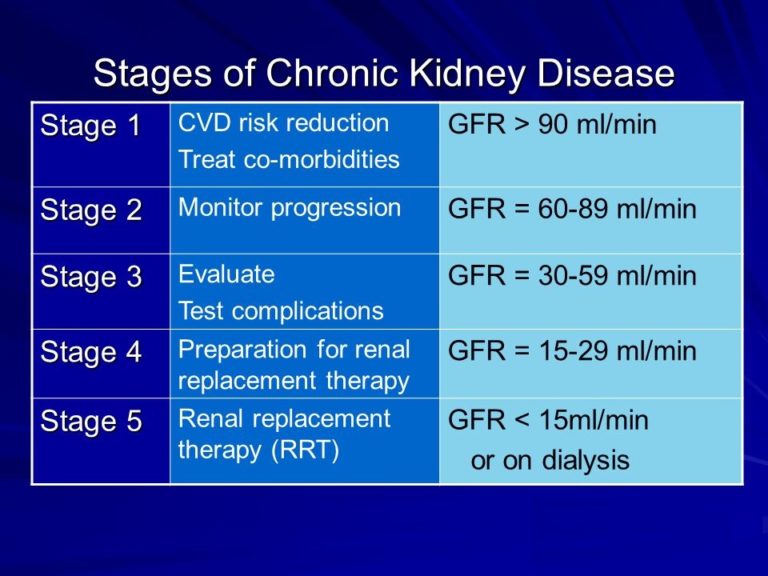What is stage 4 and Stage 5 kidney disease
Stage 4 kidney disease is characterized by a severe decrease in the GFR, which is approximately at 15-29 % and kidney function deterioration of up to 85%. Stage 5 kidney disease is characterized by kidney failure. This is end stage renal disease when the GFR is less than 15 and the kidney deterioration rate has reached above 85%. It is already known that kidney disease does not show any early signs of occurrence. The disease manifests itself only as it increase in severity. The disease manifests itself only in stage 4 and 5. By this time the damage has already been done.
How can stage 4-5 kidney disease be managed
When talking of treatment, stage 4 and stage 5 of kidney disease call for more labor intensive remedies. These are dialysis and kidney transplant. Patients showing signs of stage 4 kidney disease are advised to start preparing themselves for either dialysis or kidney transplant. During this stage of the disease, patients may experience the following conditions:
- Fatigue,
- Swelling in extremities
- Swelling in the face
- Changes in urination
- Sleep problems
- Bad breadth
- Numbness or tingling in the feet
- Numbness or tingling in the hands
- Loss of appetite
In stage 5 of the kidney disease, the kidneys lose 85% of their potency. Management of the disease at this stage is only through dialysis or kidney transplant. One major symptom of stage 5 or end stage renal disease is the yellowish skin. Dialysis can help rid the patient’s body from the toxins that have accumulated in his body, making the patient’s skin appear yellowish in color. However, the toxin buildup may cause once again and may require a repeat session of dialysis. Thus, it can be seen that as the disease progresses it gets more dangerous and may even lead to death.
Therefore, it is always better to start managing the disease right from its inception, which means it should have been tackled at the stage 1, stage 2 and stage 3. During this period, it is possible to control the disease by using various methods like probiotics, changing one’s lifestyle, changing one’s food habits, increasing the level of activity one undertakes per day, etc. One may also start taking supplements that may provide the body with probiotics. The probiotics will eliminate bad bacteria from the body by feeding on them. They will also carry the bad bacteria to the rectum, thus enabling the latter to be disposed of as fecal matter.
Thus, management of stage 4 and stage 5 kidney disease is fraught with danger. The only way to manage the disease is through artificial means mentioned above. The disease can be controlled and rooted out of the human body at the stage 1-3 level, when the kidney condition is still better and it can perform its main function of cleansing the body. In stage 4-5 however, as the kidney deteriorates, it stops doing its work and this leads to aggravation in the disease.

